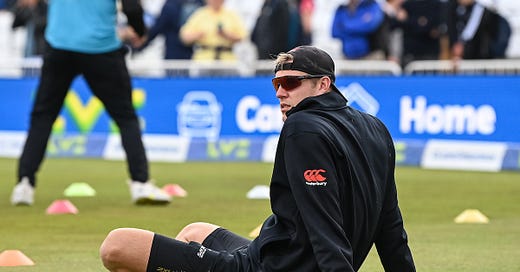Looking for love in all the wrong places
A Valentine’s Day newsletter, including a dreadful day for NZC, the Super Bowl and “The Forgotten History of Head Injuries”
It was a bad news, terrible news, worse news morning for New Zealand Cricket.
Kyle Jamieson (pictured) has re-stressed the stress fracture in his back;
Matt Henry has mistimed his procreation;
The White Ferns suffered consecutive humiliations;
It’s desperately sad news for Kyle Jamieson.
Back in the day, I helped Shane Bond with his a…
Keep reading with a 7-day free trial
Subscribe to The Bounce to keep reading this post and get 7 days of free access to the full post archives.




